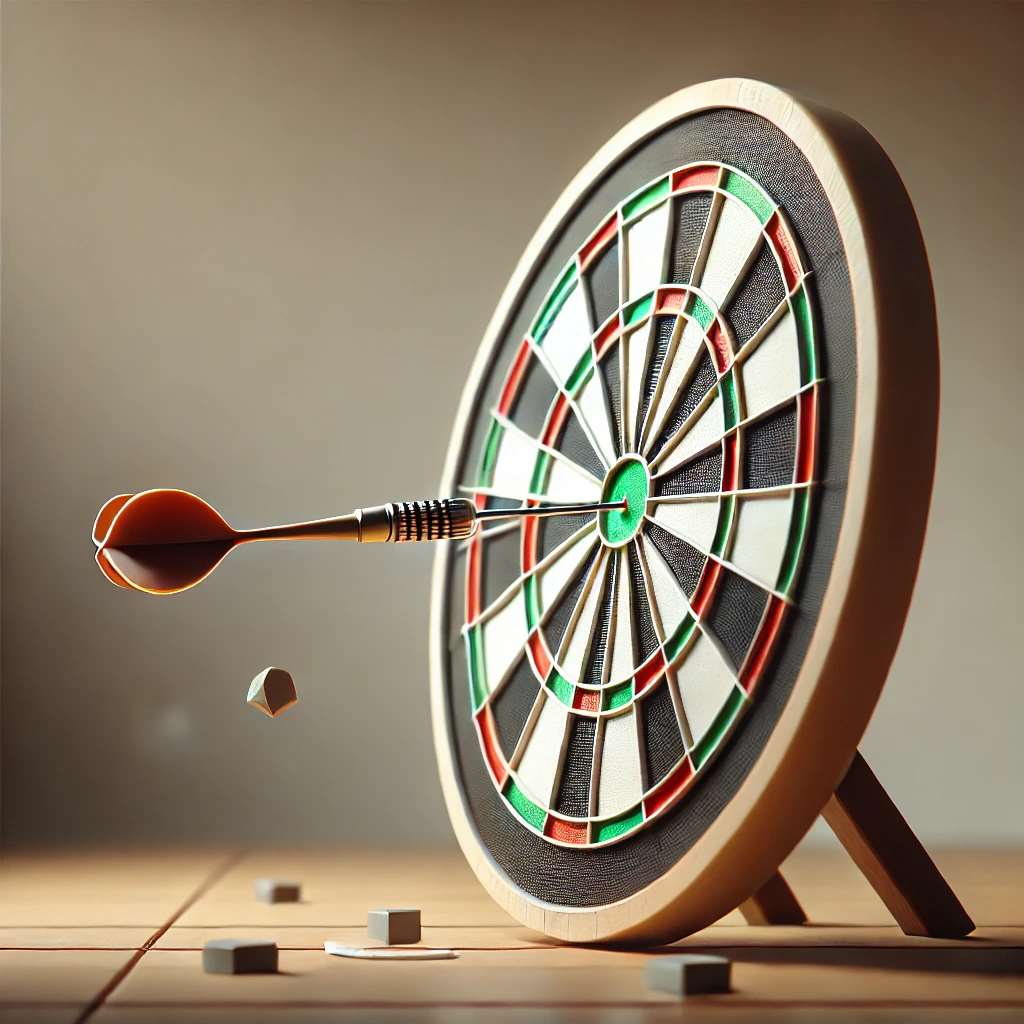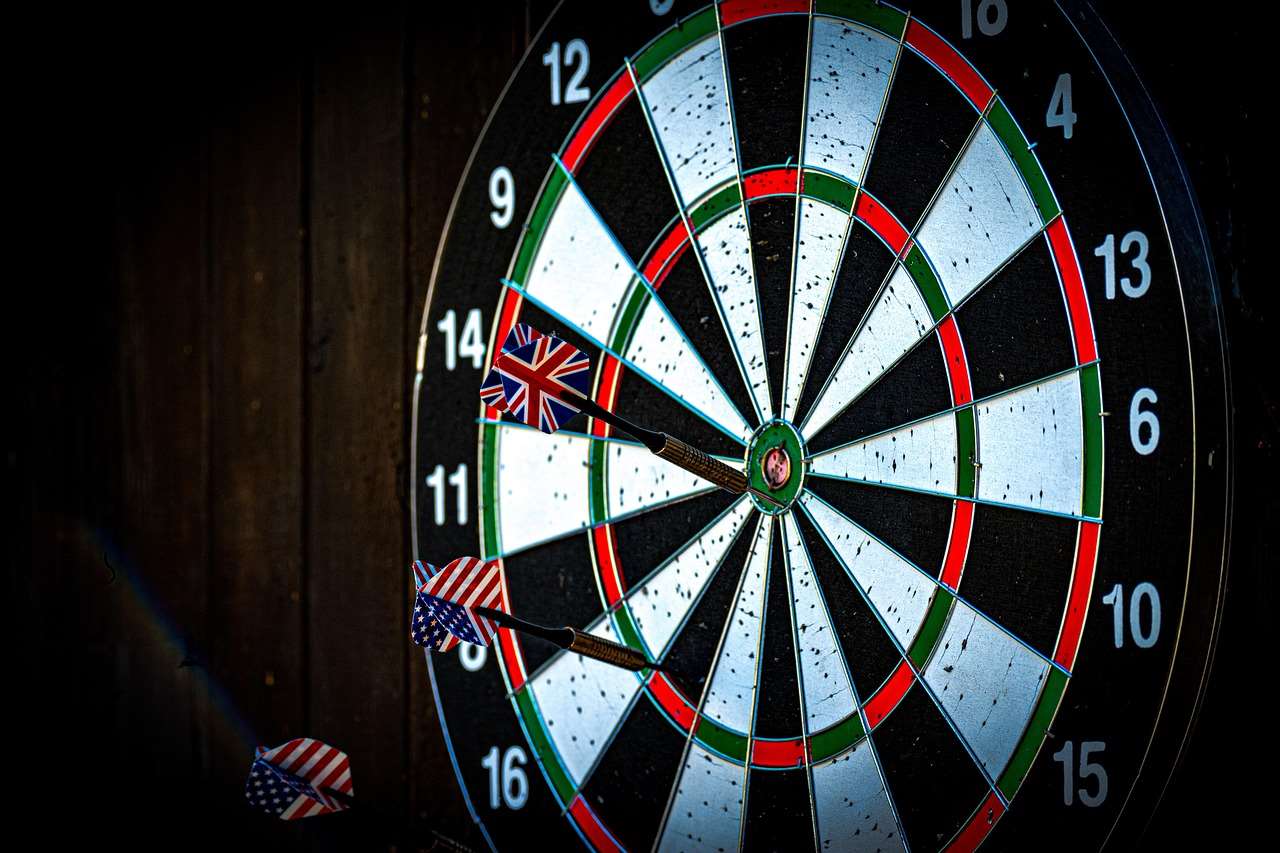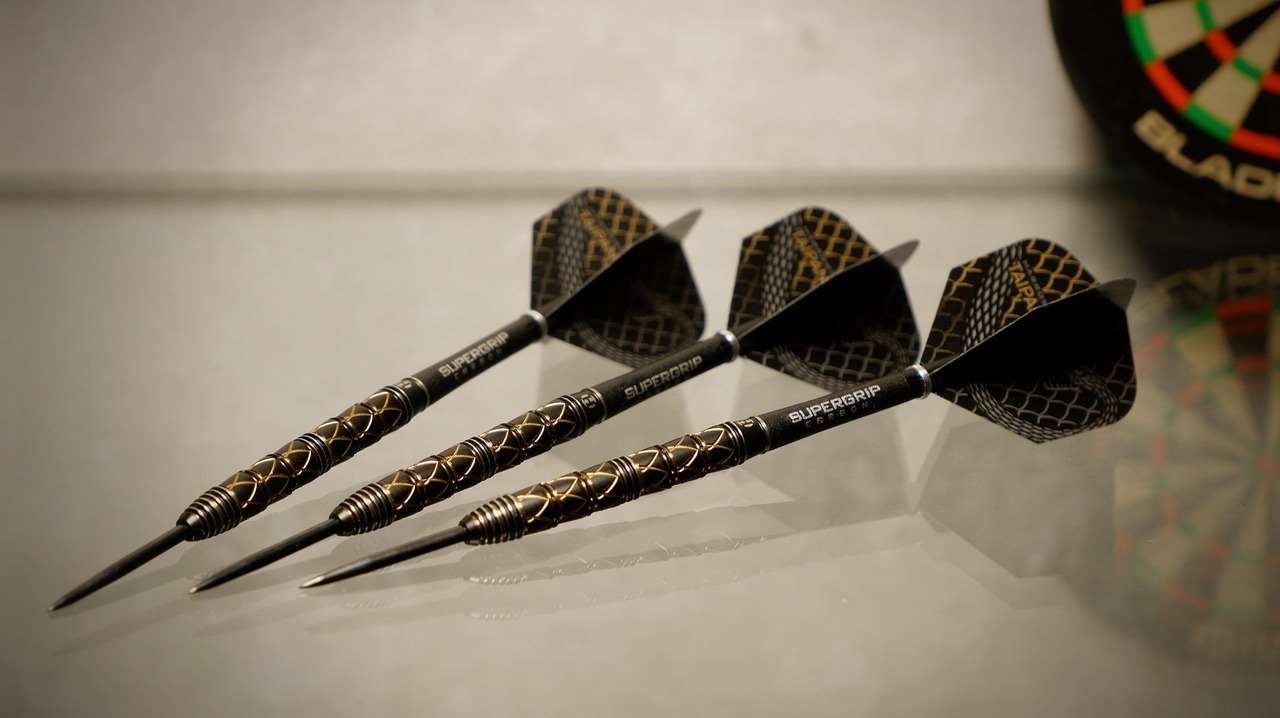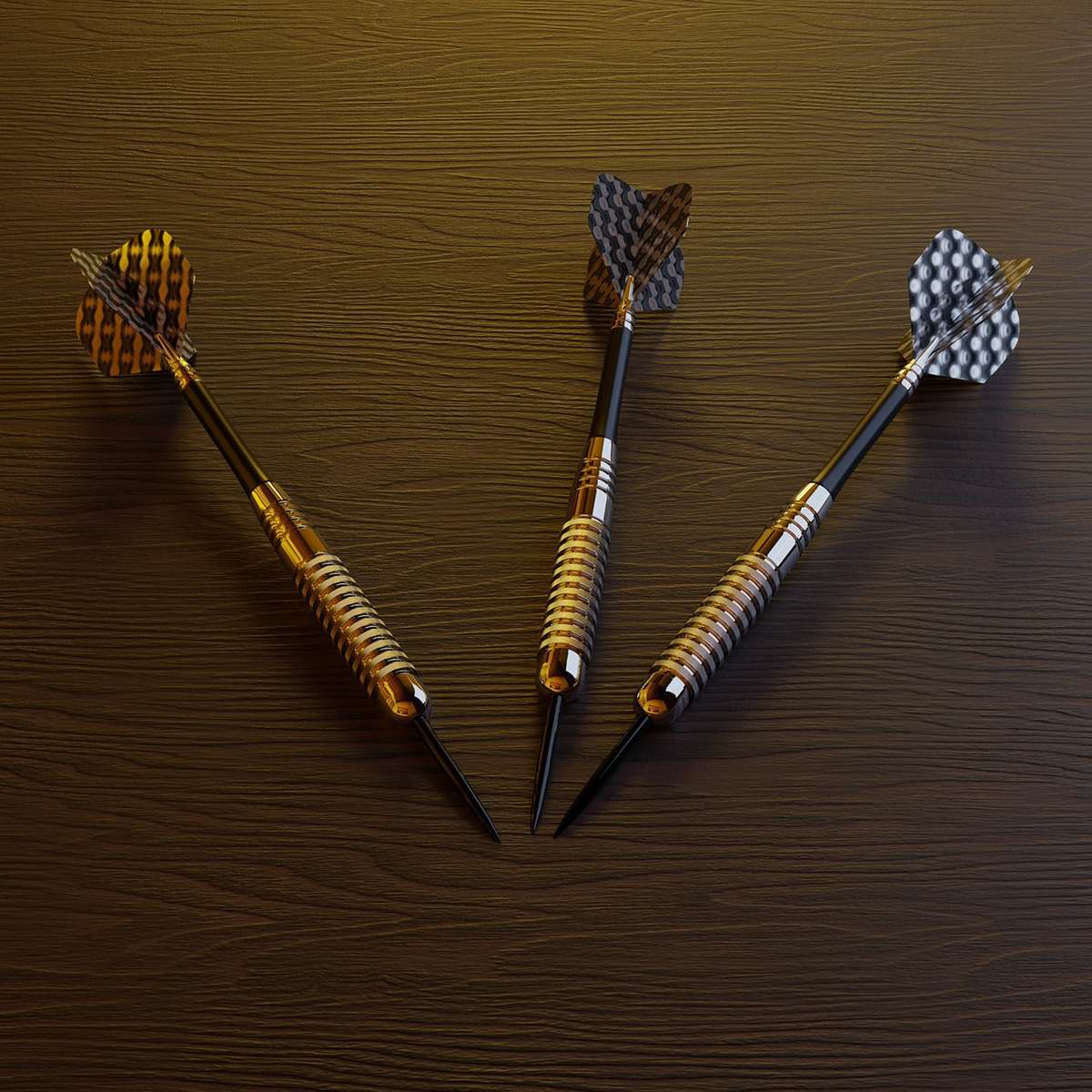A mixed darts league handicap is a crucial tool for leveling the playing field, ensuring that players of all skill levels can compete fairly and enjoyably within the same league. This article will explore the intricacies of handicap systems, their benefits, various methods for calculating them, and best practices for implementing them effectively in your mixed darts league. We’ll also look at common challenges and solutions, helping you create a more competitive and inclusive environment for all your players.
⚠️ Still Using Pen & Paper (or a Chalkboard)?! ⚠️
Step into the future! The Dart Counter App handles all the scoring, suggests checkouts, and tracks your stats automatically. It's easier than you think!
Try the Smart Dart Counter App FREE!Ready for an upgrade? Click above!
Understanding Mixed Darts League Handicap Systems
The primary goal of a mixed darts league handicap is to create a level of parity between players with varying degrees of experience and skill. Without a handicap, more skilled players would consistently dominate, potentially discouraging less experienced players and leading to a decline in league participation. A well-designed handicap system allows everyone to have a chance to win, fostering a more positive and competitive atmosphere. It’s about creating a system where everyone feels they have a shot at victory, no matter their current ability.

Handicaps aren’t just about fairness; they also encourage improvement. By knowing they have a chance to win even against more skilled opponents, less experienced players are more motivated to practice and refine their skills. This ultimately benefits the entire league, as the overall level of play improves over time. Think of it as a built-in incentive program for continuous improvement.
Benefits of Implementing a Mixed Darts League Handicap
There are several compelling reasons to implement a handicap system in your mixed darts league. Let’s explore some key benefits:
- Increased Participation: A handicap system makes the league more welcoming to players of all skill levels. This can lead to higher registration numbers and a more diverse player base.
- Improved Morale: When everyone feels they have a fair chance to win, morale improves significantly. This creates a more positive and enjoyable experience for all participants.
- Greater Competition: Handicaps foster closer matches and more unpredictable outcomes, leading to more exciting and engaging competition.
- Player Development: Less experienced players are encouraged to improve their skills to reduce their handicap, fostering continuous development. They can then read up on Basic Darts Fundamentals for Beginners
- Enhanced Social Interaction: A more balanced league encourages better social interaction between players of different skill levels, fostering camaraderie and sportsmanship.
Methods for Calculating a Mixed Darts League Handicap
Several methods exist for calculating handicaps in a mixed darts league handicap setting. Each method has its advantages and disadvantages, and the best choice will depend on the specific needs and preferences of your league. Here are some common approaches:

Averaging Method
The averaging method is one of the simplest and most widely used handicap systems. It involves calculating each player’s average score per dart (APD) or per game over a certain period. The handicap is then determined based on the difference between each player’s average and a predetermined target average (often the league average or the average of the top players). For example, if the league average is 60, and a player’s average is 45, their handicap might be 15 points per game.
Pros: Easy to calculate and understand. Relatively fair for most players.
Cons: May not accurately reflect a player’s true ability if they have only played a few games. Can be susceptible to sandbagging (intentionally playing poorly to lower one’s average).
Percentage-Based Handicap
This method involves calculating a player’s handicap as a percentage of their average score. For example, a player with an average of 50 might receive a 70% handicap, meaning they start each game with 70% of 50 points (35 points) added to their score. This system tends to benefit lower-scoring players more than higher-scoring players.
Pros: Simple to implement. Provides a significant advantage to lower-skilled players.
Cons: Can be seen as unfair to higher-skilled players, as the percentage-based adjustment may be too generous to lower-skilled players.
Fixed-Point System
In a fixed-point system, players are assigned a handicap based on predetermined skill levels or categories. For example, players might be categorized as Beginner, Intermediate, or Advanced, with each category assigned a fixed handicap. This is often simpler to manage, especially in larger leagues.
Pros: Easy to understand and administer. Requires less ongoing calculation.
Cons: Less precise than averaging or percentage-based methods. May not accurately reflect individual player skill variations within each category.

ELO-Based System
Inspired by chess rating systems, an ELO-based handicap assigns players a numerical rating that fluctuates based on their performance against other players. Winning against a higher-rated player results in a larger increase in rating, while losing to a lower-rated player results in a larger decrease. The handicap is then based on the difference in ratings between two players. This system requires more sophisticated tracking and calculation but can be highly accurate over time.
Pros: Highly accurate and dynamic. Reflects a player’s true ability over time.
Cons: More complex to implement and maintain. Requires careful tracking of match results and rating updates.
Best Practices for Implementing a Mixed Darts League Handicap
Implementing a mixed darts league handicap effectively requires careful planning and attention to detail. Here are some best practices to ensure a fair and successful system:
- Establish Clear Rules: Clearly define the rules of the handicap system, including how averages are calculated, how handicaps are adjusted, and how disputes are resolved. Transparency is key to ensuring player acceptance.
- Regularly Review and Adjust Handicaps: Handicaps should be reviewed and adjusted regularly (e.g., weekly or bi-weekly) to reflect changes in player skill. This ensures that the system remains fair and accurate over time.
- Monitor for Sandbagging: Be vigilant for players who may be intentionally playing poorly to lower their handicap. Implement measures to discourage this behavior, such as penalties or handicap adjustments based on observed performance.
- Communicate Effectively: Keep players informed about their handicaps and how the system works. Provide clear explanations and address any concerns or questions promptly.
- Seek Player Feedback: Regularly solicit feedback from players about the handicap system. Use this feedback to identify areas for improvement and make adjustments as needed.
Common Challenges and Solutions in Mixed Darts League Handicaps
Even with careful planning, you may encounter challenges when implementing a mixed darts league handicap. Here are some common issues and potential solutions:
Sandbagging
Challenge: Players intentionally playing poorly to lower their handicap.
Solution: Implement penalties for consistently underperforming, such as automatic handicap adjustments or temporary bans from competition. You can also compare a player’s current performance to their historical data and investigate any significant discrepancies. Furthermore, implementing a “most improved player” award can incentivize genuine improvement rather than sandbagging.

Inaccurate Averages
Challenge: Averages based on a small number of games may not accurately reflect a player’s true ability.
Solution: Require a minimum number of games played before a player’s handicap is calculated. Consider using a weighted average that gives more weight to recent games. You can also implement a “provisional handicap” for new players that is adjusted more frequently in their initial games.
Player Dissatisfaction
Challenge: Some players may feel that the handicap system is unfair or inaccurate.
Solution: Be transparent about how the handicap system works and provide clear explanations for all adjustments. Solicit feedback from players regularly and be willing to make adjustments based on their input. Consider forming a handicap committee made up of players to oversee the system and address any concerns.
Complexity
Challenge: Complex handicap systems can be difficult to understand and administer.
Solution: Choose a handicap system that is appropriate for the size and skill level of your league. Simplify the system as much as possible without sacrificing fairness. Provide clear instructions and training for those responsible for administering the system.
Tools and Resources for Managing Mixed Darts League Handicaps
Several tools and resources can help you manage your mixed darts league handicap more effectively:
- Spreadsheet Software: Programs like Microsoft Excel or Google Sheets can be used to track player averages, calculate handicaps, and generate reports. You can easily create formulas to automate calculations and visualize data.
- Darts League Management Software: Dedicated software solutions offer features such as online registration, scheduling, handicap tracking, and result reporting. These programs can significantly streamline league management.
- Online Handicap Calculators: Numerous websites offer free handicap calculators that can simplify the process of determining handicaps based on different methods. These tools can be particularly useful for leagues using averaging or percentage-based systems.
- Darts Forums and Communities: Online forums and communities dedicated to darts can provide valuable information and support. You can ask questions, share best practices, and learn from the experiences of other league organizers.

Remember to continuously evaluate your system and make adjustments as needed to ensure it meets the evolving needs of your league. Consider that Modifying rules for mixed-level dart players can have a huge impact on the league’s parity.
Conclusion
Implementing a mixed darts league handicap is essential for creating a fair, competitive, and enjoyable environment for players of all skill levels. By understanding the benefits of handicaps, exploring different calculation methods, and adopting best practices for implementation, you can create a system that fosters participation, improves morale, and promotes player development. Remember to address common challenges proactively and utilize available tools and resources to streamline league management. Ultimately, a well-designed handicap system will contribute to a more vibrant and thriving darts league. Consider trying some Fun dart game variations with modified rules to change things up. Now, take what you’ve learned and implement a handicap system that will make your mixed darts league the best it can be! Consider further research to know How to make darts fairer with handicap rules.
Hi, I’m Dieter, and I created Dartcounter (Dartcounterapp.com). My motivation wasn’t being a darts expert – quite the opposite! When I first started playing, I loved the game but found keeping accurate scores and tracking stats difficult and distracting.
I figured I couldn’t be the only one struggling with this. So, I decided to build a solution: an easy-to-use application that everyone, no matter their experience level, could use to manage scoring effortlessly.
My goal for Dartcounter was simple: let the app handle the numbers – the scoring, the averages, the stats, even checkout suggestions – so players could focus purely on their throw and enjoying the game. It began as a way to solve my own beginner’s problem, and I’m thrilled it has grown into a helpful tool for the wider darts community.